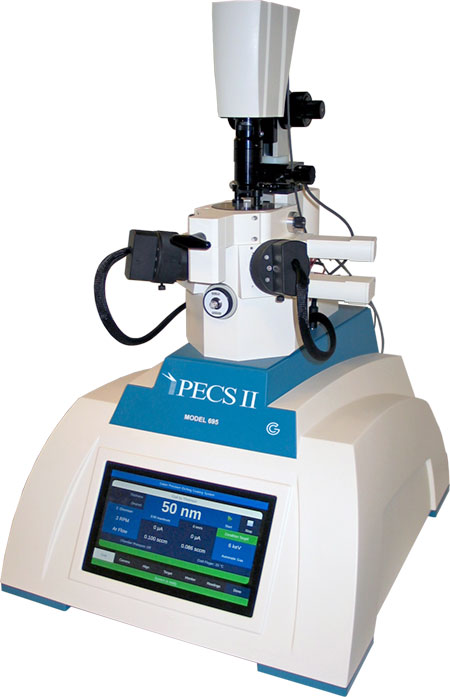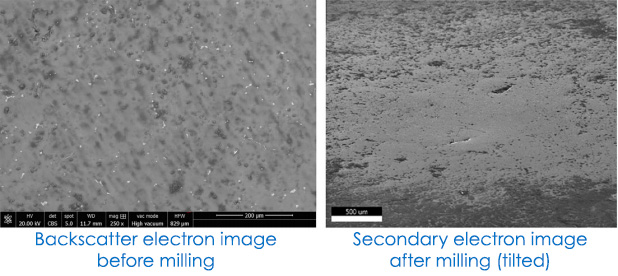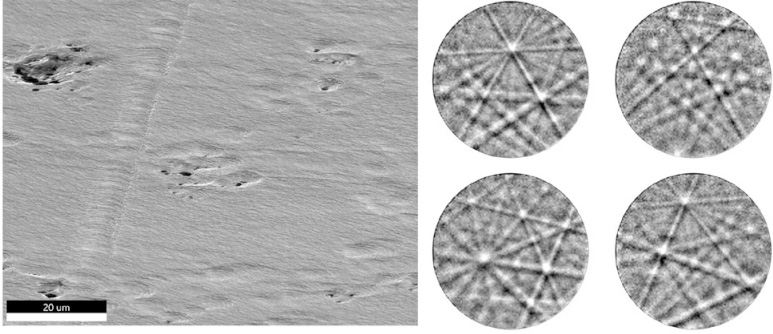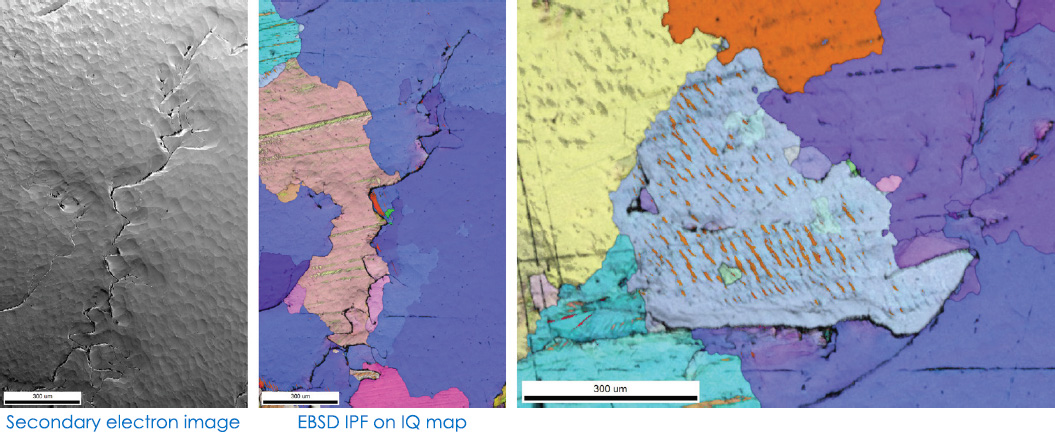Specimen Preparation for Better EBSD Results
How to get better EBSD results by using ion milling to prepare samples. In this article we’ll focus on the example of removing an oxide layer from magnesium alloy, using the Gatan PECS II broad beam ion mill for specimen preparation.
See the PECS II in action – contact us to arrange a demonstration!
Blue Scientific is the official Nordic distributor for Gatan systems for electron microscopes in Norway, Sweden, Denmark, Finland and Iceland. For more information or quotes, please get in touch.
Gatan sample preparation Instruments
More about ion milling
Contact us on +44 (0)1223 422 269 or info@blue-scientific.com
EBSD Sample Preparation
To get the best results from EBSD (Electron Backscatter Diffraction) orientation measurements, the true structure of a specimen must be undistorted and continuous to the surface. Mechanical or electro-polishing is often used to prepare the surface for analysis.
Remove Oxide Layers
On some materials that are susceptible to oxidation (eg magnesium or zinc alloys), an oxide layer can form rapidly when the sample is exposed to water. This can happen during polishing or afterwards, from water vapour in the air during transport or storage.
This oxide layer blocks the observation of EBSD patterns. For usable results it must be removed before analysis.
Broad Beam Ion Milling
Broad beam ion milling can be used to remove the oxide layer that forms on Mg alloys, without exposing the sample to water or introducing additional mechanical strain. You can then successfully obtain good quality EBSD patterns from the specimen, and analyse the microstructure.

Gatan PECS II Ion Milling System
The Gatan PECS II is a fully automated broad argon beam system for preparing samples for SEM, optical microscopy and other techniques.
- Polish, etch, coat and delayer samples and prepare cross-sections.
- Damage-free etching at voltages as low as 100V.
- Sputter target materials onto the surface to protect or minimise charging.
- Specimens up to 32mm diameter.
- Take optical images for correlation with other results.
Contact us to arrange a demonstration or a trial loan of the system!
Webinar
Join Gatan for a webinar about this technique on Thursday 4th February 2021 at 5pm CET. Details and registration…
Example: Magnesium Alloy
In this example, a mechanically polished Mg sample had been in storage for several years, and a thick oxide layer formed on the surface. At first it was not possible to acquire EBSD patterns.

The Gatan PECS II ion milling system was used to remove the oxide:
- Milled with 5 kV Ar ions
- Incident angle: 4˚
- Duration: 30 minutes.
Thirty minutes of milling removed enough of the surface to fully expose the native material. An area of multiple-mm2 of the oxide layer was removed, allowing the alloy to be analysed with EBSD.
This example is available to download as a pdf experiment brief from Gatan.


Using the PECS II
These short videos demonstrate how to load, polish and coat samples in the ion mill:
More Information
Blue Scientific is the official distributor for Gatan in the Nordic region. The range includes sample preparation systems for TEM and SEM, as well as cameras, imaging filters and more. We’re available to provide quotes and answer all your questions – just get in touch.
We also run live demonstrations of the PECS II ion milling system, if you’d like to see it for yourself and try it with your samples. Contact us to arrange a date.


